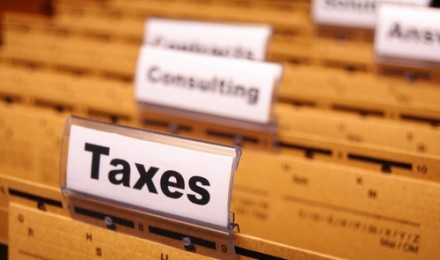There is a certain joy that comes when you receive tax refunds or rebates. It is not like any other, but involves a deep satisfaction of a large check coming your way. Whether the windfall comes from tax refunds or a rebate that was dug up on a large purchase, the feeling is the same. Shortly after, however, anxiety takes over when the individual wonders what to do with this sudden influx of money. Should it be saved? Spent? Invested?
Tax refunds are a hotly debated topic among financial professionals. Many will say if you are getting a refund you are doing your withholding wrong throughout the year. They argue that you are essentially giving the IRS an interest free loan that you could have been saving or investing and earning yourself interest on the money. Logically this makes some sense. But we often do not act logically. So instead of saving the extra money as it comes in throughout the year, they spend it. Often they spend it on consumable goods, like eating out, drinks with friends, or other items that when they are gone, they’re gone. Rather than worry about trying to budget the money each week, just let the IRS hang on to it. When it is received the money can be applied, in one large lump sum, to debt, savings or retirement investing.
Along those same lines are large rebates for purchases. Especially when the consumer is planning to pay full price, and then gets the surprise that they have a rebate coming, there are thoughts that race through their heads. Instead of immediately going out and spending the money, following a pre-developed plan will help them maximize the rebate.
Psychologically a refund or rebate feels like a huge bonus. If the individual gets small rewards throughout the year (less taken out for taxes in each paycheck) it does not feel the same. Thus the money is treated different. Before that money is even an option a simple plan should be made. It can be as simple as 50% will go towards an emergency fund, 25% towards retirement investments, and 25% towards buying something now. Naturally a plan specific to the individual is best, but the premise is that it does not need to be elaborate.
The average tax refund is $3,000. If the worker were to take it throughout the year by withholding less, and invest it in a savings account that yielded 1%, he or she would have less than $30 of earned interest. This is hardly enough to get excited about. Most likely the individual would spend the money instead of saving it, so for most people they would not have any accumulated interest. Instead of trying to save a lot of small things, just let the IRS hang on to it, and then save a lump sum all at once when the refund comes. By creating that plan on what to do with the money, well before it even comes in, the individual will be far better off than their peers who try to decide on the spot where any of it will go.
There is a certain joy that comes when you receive tax refunds or rebates. It is not like any other, but involves a deep satisfaction of a large check coming your way. Whether the windfall comes from tax refunds or a rebate that was dug up on a large purchase, the feeling is the same. Shortly after, however, anxiety takes over when the individual wonders what to do with this sudden influx of money. Should it be saved? Spent? Invested?
Tax refunds are a hotly debated topic among financial professionals. Many will say if you are getting a refund you are doing your withholding wrong throughout the year. They argue that you are essentially giving the IRS an interest free loan that you could have been saving or investing and earning yourself interest on the money. Logically this makes some sense. But we often do not act logically. So instead of saving the extra money as it comes in throughout the year, they spend it. Often they spend it on consumable goods, like eating out, drinks with friends, or other items that when they are gone, they’re gone. Rather than worry about trying to budget the money each week, just let the IRS hang on to it. When it is received the money can be applied, in one large lump sum, to debt, savings or retirement investing.
Along those same lines are large rebates for purchases. Especially when the consumer is planning to pay full price, and then gets the surprise that they have a rebate coming, there are thoughts that race through their heads. Instead of immediately going out and spending the money, following a pre-developed plan will help them maximize the rebate.
Psychologically a refund or rebate feels like a huge bonus. If the individual gets small rewards throughout the year (less taken out for taxes in each paycheck) it does not feel the same. Thus the money is treated different. Before that money is even an option a simple plan should be made. It can be as simple as 50% will go towards an emergency fund, 25% towards retirement investments, and 25% towards buying something now. Naturally a plan specific to the individual is best, but the premise is that it does not need to be elaborate.
The average tax refund is $3,000. If the worker were to take it throughout the year by withholding less, and invest it in a savings account that yielded 1%, he or she would have less than $30 of earned interest. This is hardly enough to get excited about. Most likely the individual would spend the money instead of saving it, so for most people they would not have any accumulated interest. Instead of trying to save a lot of small things, just let the IRS hang on to it, and then save a lump sum all at once when the refund comes. By creating that plan on what to do with the money, well before it even comes in, the individual will be far better off than their peers who try to decide on the spot where any of it will go.







